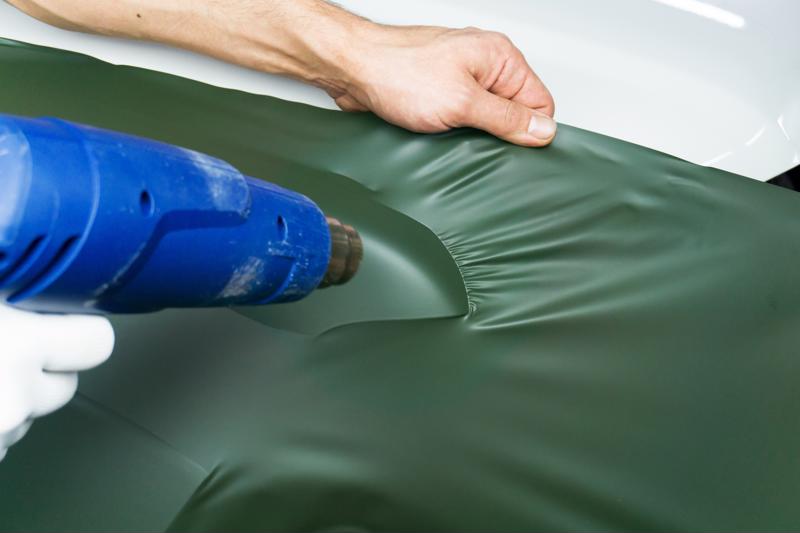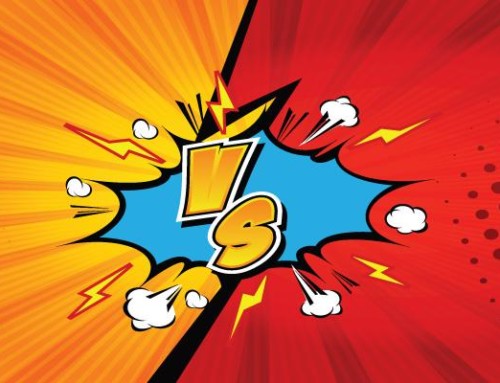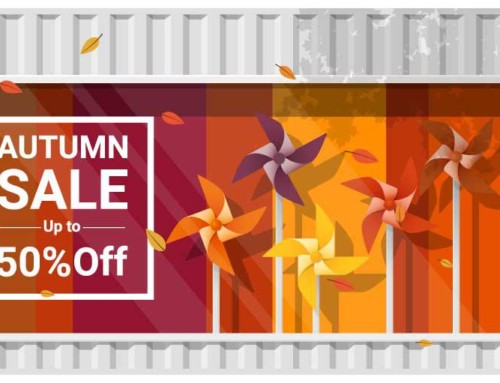Whether you have a major sales event coming up or want to keep workers safe while using machinery, signage is perhaps the most basic, yet eminently effective way to relay an important message. However, just as how you say something is every bit as crucial to the words you select, the material used must be carefully chosen to ensure it will be effective for the intended use and last the entire lifespan of the sign.
Pressure-sensitive vinyl may be just what you need to make the right impression. But what is this material, which is more commonly referred to as P/S vinyl? On what surfaces is it best applied? And what type of adhesive – permanent or removable – should you select for application?
“Pressure-sensitive vinyl adheres to hard surfaces through gentle pressure.”
What is P/S vinyl?
Let’s start with the basics. Pressure-sensitive vinyl gets it’s name because it is made from polyvinyl chloride (PVC) film and a thin adhesive layer applied to the backside. The vinyl film can come in a range of thickness gauges and base colors (white and clear is most common). The coated adhesive backside is pressure sensitive for long-lasting installation purposes, but there are removable adhesive options also for short term and easy deconstruction. For unique decal needs like membrane overlays, safety labels, sidewalk signage, or floor graphics, Hopkins Printing has different construction options available.
Pressure-sensitive vinyl is described as such because it adheres to hard smooth surfaces through gently applied pressure, much like you would put a sticker on a pane of glass, piece of paper or sheet of metal. Whether it’s used for decorative purposes, informative or as a quick, no-nonsense way to build your brand, P/S vinyls are used because they are inexpensive, don’t need special hardware, and are easy to install. They’re also built to last, made from durable material that holds up well under various conditions.
You name the hard surface – smooth wood, glass, plastic, metal, ceramic, concrete – P/S vinyl fits the bill, as the tacky adherent holds the signage in place for as long – or as short – as you need it there. Window graphics are just one of the many signage products that can be manufactured from pressure-sensitive vinyl.

Cast versus calendared: What’s the difference?
While P/S vinyls can be effectively applied to just about any hard display area, certain types of the material are better geared for particular surfaces. For example, P/S vinyls fall into one of two manufacturing categories: cast or calendared.
Cast vinyl, as its title would suggest, is produced on a casting sheet, which allows the material to stretch and thin out. This reduces susceptibility to shrinkage in the manufacturing process. You’re most likely to find cast P/S vinyl in applications that need the decal to stretch over a curved surface like automobile graphics or for applications where longevity is most important.
P/S calendared vinyl is similar to cast, in that they’re formed into thin sheets, but instead of a casting sheet, they’re produced through heated steel rollers. Over time, calendared vinyls shrink to get back into their original state but this shrinking is an extremely slow process; you may see large posters shrink as little as 1/16 of an inch per year.
Generally speaking, cast P/S vinyls shrink less and are usually rated to last for a year or two longer than calendared vinyls due to how they are manufactured. You’ll find that cast vinyls are significantly more expensive than calendared vinyl counterparts.
Which type of adhesive should you select?
P/S vinyls are best known for firmly sticking to most solid surfaces. That said, how do you know if you want an adhesive that is permanent or one that is easily removable?
It really all depends on what the P/S vinyls are being used for. For instance, say you’re a contractor or builder and have workers that use potentially dangerous equipment. Their safety should always be top of mind and will never not be an issue to hammer home. Thus, a permanent adhesive may be sufficient, but it’s sometimes critical that you have your adhesive right. Hopkins Printing has the capability of applying specially crafted adhesives that are rated for applying low energy surface materials or applications that have high or cold surface temperatures. Be sure to share this information to ensure your needs are properly met and your product doesn’t fail in the field.
On the other hand, perhaps a convention or tradeshow is nearing and you want to spread the word about your company on the aisle concrete floors. This obviously is something that is temporary so a short-term use adhesive designed for walking on and can apply to textured concrete surfaces makes more sense.
It’s important to note that just because a permanent adhesive is described as such, it doesn’t mean you’ll never be able to peel off the vinyl. It just means that the hold is a bit stronger, making it slightly more difficult to remove when the time comes. At the same time, the longer the decal is applied, the better the bond becomes. Using a heat gun on the sticker / decal prior to peeling helps soften and loosen the adhesive bond.
No matter what your signage needs may be, we have the materials, equipment, know-how and experience to get the job done right – and on the first try. Not sure which vinyl type or adhesive is right for your project? Contact Hopkins Printing today for expert advice!
Frequently Asked Questions
Will P/S vinyl damage surfaces when removed?
It depends on the adhesive type. Removable adhesives are less likely to cause damage, while permanent ones may require tools like a heat gun for safer removal.
Can I use P/S vinyl on textured or curved surfaces?
Yes, but for the best results, use cast vinyl, which is more flexible and conformable than calendared vinyl.
What’s the best way to clean and maintain vinyl graphics?
Use mild soap and water with a soft cloth. Avoid harsh chemicals or abrasive materials that could degrade the surface or ink.
Can rigid vinyl be recycled?
Recyclability depends on local facilities. Some rigid PVCs are recyclable—check with your municipal recycling program.
Is rigid vinyl safe for outdoor use?
Yes, especially when printed with UV inks and finished with a protective coating. It offers great durability for both indoor and outdoor signage.



